Best stereo amplifiers 2025: 9 class leaders chosen by our review experts
Breathe life into your hi-fi system with a new integrated amp
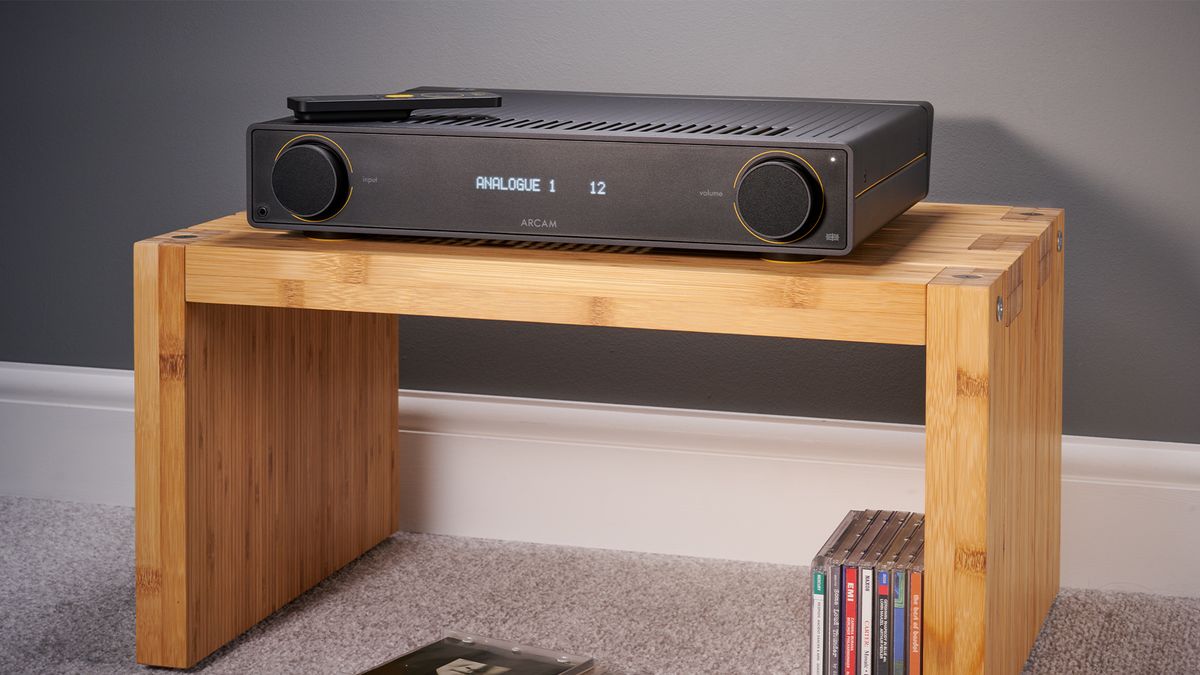
The beating heart of any hi-fi separates system, the stereo amplifier is what takes in your sources (CD player, turntable, music streamer) and amplifies their signals to an output that can be delivered by passive loudspeakers. Without an amplifier, you simply don't get a sound.
You can cover amplification by connecting sources straight into active speakers, which have amplifiers built into the cabinets, or by opting for a pre/power amplifier pairing where the necessary preamp and power amp duties are housed in separate boxes. But the most simple, convenient, space-efficient and indeed popular option is buying a one-box integrated amplifier, which is the focus of this stereo amp buying guide.
Naturally, which you pick will greatly impact your system's sonic quality and character, so you want a best-in-class performer that offers the connections your system needs. (Need a hand choosing? Jump to our how to choose section below.)
Our experienced in-house reviews team tests tens of amplifiers every year – we are one of the (if not the) first hi-fi publications to get hands and ears on newly announced models – and has picked eight class leaders across several price points. The What Hi-Fi? testing process is uniquely comprehensive: every amp under scrutiny is compared to the current class leader at its price point in our dedicated listening rooms. Such thoroughness and wide contextual knowledge allow us to confidently pick the best stereo amps across the spectrum.
So let's dive into the definitive list, shall we?
The quick list
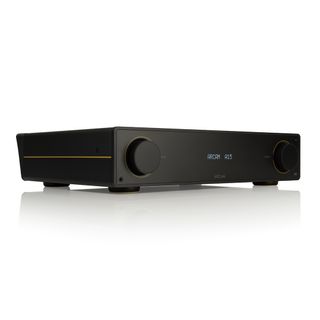
Arcam’s A15 is well-built, packed with useful features and, most importantly, sounds fantastic.
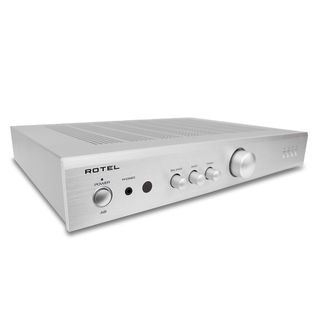
Our stereo amplifier of the year – a fuss-free, well-built design that sets an enviable standard for sound quality at this modest level.
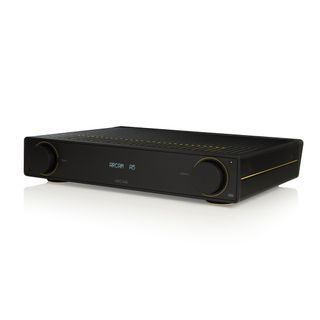
Arcam is back in the affordable stereo amplifier market with a bang; the A5 is a superbly rounded performer for the money.
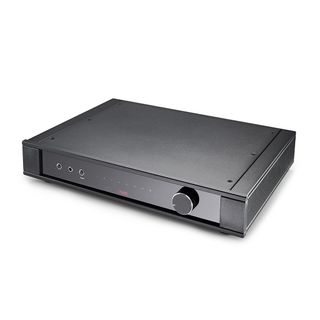
An assured, elegant and capable stereo amplifier that cuts to the heart of the music – now with a built-in DAC.
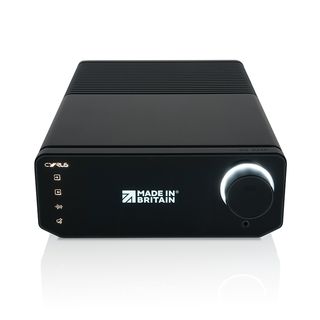
Everything we want in a modern integrated amplifier. It’s well-built, fully equipped, looks smart and sounds excellent.
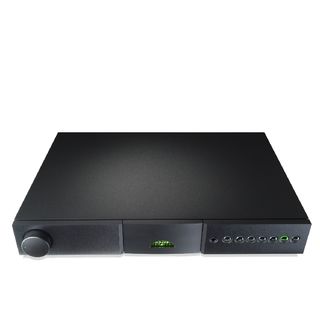
Naim’s analogue-only Nait XS 3 is the most musically enticing option at this serious level.
Load the next 3 products ↓
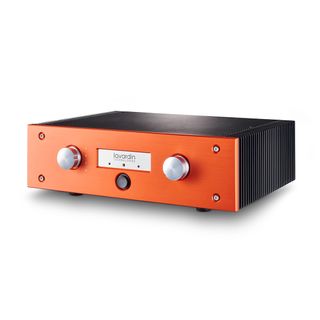
A left-field choice that doesn’t come cheap, but in the right system this Lavardin is a hugely compelling performer.
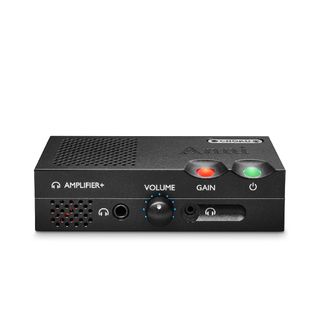
As brilliant as it is quirky, this diminutive amplifier offers a premium twist on desktop sound.
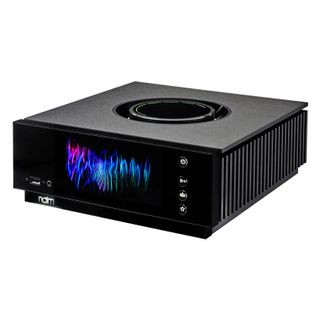
For those who want network streaming baked in, this just-add-speakers amp goes big on both style and substance.
Read more below
Recent updates
January 2025: The newly reviewed Cyrus 40 AMP replaces the Rega Aethos as the Best Premium Amplifier for its better all-round offering. We've also added a Best Streaming Amplifier for those who want network streaming built into their integrated amp design, such is that category's increasing popularity.

I'm the managing editor of What Hi-Fi? and have been testing hi-fi and audio equipment for over a decade, including my fair share of stereo amplifiers. An amplifier is the centerpiece of a system, through which music flows both into and out, so it's crucial to get the best performer and partner for your source and speakers that you can afford – and that's where this carefully curated list comes in. There's something to suit all budgets and connectivity requirements here, to get your system singing whether it comprises a modestly priced turntable paired with entry-level speakers, or indeed more premium kit.
The best stereo amplifier overall




Specifications
Reasons to buy
Reasons to avoid
Previous Arcam efforts have always looked tidy, but the British brand's new Radia range, with the all-black finish and subtle yellow accents, looks sleek and modern. Of course, the best part of the Arcam amplifier makeover doesn't concern aesthetics...
The middle-sitter in a range of three, the A15 has this powerful, precise and poised character regardless of the input chosen. "Arcam was one of the pioneers of outboard digital-to-analogue converters back in the ’80s and that experience shines through in the performance of the A15’s digital section," our in-house reviewers note in our A15 review. "It is crisp, insightful and engaging."
We are also impressed by the scale of the sound – "stereo imaging is expansive, stable and nicely layered," we wrote – as well as how it handles music’s savage dynamics. There is no shortage of punch and power, but this is no muscle-bound thug; the A15 is insightful and subtle, able to track multitudes of instrumental strands with skill.
Once we had heard how good Arcam's entry-level A5 (below) sounded, we were a little worried for the A15 – but we needn’t have been. It is clearly better than its talented sibling, delivering a sound of greater clarity, scale and precision that justifies its extra price tag and represents a logical step up.
Better yet, there's a moving-magnet phono stage built in, which is something its closest rival, the Cambridge Audio CXA81 (formerly found in this very spot) doesn't offer – and nor does its brand-new replacement, the CXA81 MKII. The new (and old) Cambridge model does reply with a USB input, though, so if that's important to you then consider it a recommendable alternative.
Otherwise, make sure you give the A15 a listen if it falls within your budget; we haven’t heard a better-sounding alternative for the money.
Read our full Arcam A15 review
The best entry-level stereo amplifier




Specifications
Reasons to buy
Reasons to avoid
For many years, Marantz's entry-level amplifier has taken this spot as our most recommendable budget entry, but Rotel has come along this year with the no-frills, performance-first A8 and knocked it off its perch. It has won not only a What Hi-Fi? Best Buy Award this year but also the most prestigious Product of the Year Award in the stereo amplifier category.
The new budget class leader reminds us of Rotel’s excellent, Award-winning budget models from the early 2000s, combining excellent build quality with a sonic performance that sets the benchmark at this modest price point.
Let's get one thing out of the way: the A8 doesn't offer Bluetooth or digital inputs, sticking simply to line-level inputs and an MM phono for connecting a turntable. We don't think that's the end of the world, though, particularly as the DAC module inside a half-decent budget streamer or CD player tends to outperform those inside budget amplifiers anyway. Sure, Bluetooth would have been nice, but you can easily cover that base either with a music streamer or an affordable Bluetooth receiver.
Elsewhere, the Rotel does everything right. The Marantz PM6007 it surpasses may sound more spacious and fluid, but the A8 offers greater insight and is all the more compelling for being able to dig up finer details. As our expert reviewers noted in our A8 review, "this is an amplifier that just fades into the background letting the recording and the other components in the system step into the limelight". If you are looking for a stand-out budget amplifier, ignore this one at your peril.
There aren't many alternatives around this price point that we can heartily recommend, although the aforementioned Marantz is still a great alternative, particularly if you do want digital inputs. And the Rega io is a half-width joy that doesn't cost much more. The high-performing Mission 778X is one to consider if you want Bluetooth and a USB or simply value retro aesthetics and/or a half-width box and can afford the £549 / $549 / AU$1099 outlay.
If you're looking for an even cheaper option, however, we would point you to the five-star Cambridge Audio AXA35, which is a brilliant 'my first amplifier' option.
Read our full Rotel A8 review
The best budget stereo amplifier



Specifications
Reasons to buy
Reasons to avoid
Arcam’s once dominant presence in the affordable stereo component market definitely waned in recent years, leaving the likes of Cambridge Audio, Marantz and Rega to take bigger pieces of the pie. Cambridge Audio's CXA61 sat in this very spot on this list for many years, in fact. That it no longer does tells you a lot about how good Arcam's new A5 is. Like its next-level-up A15 sibling (at the top of this list), the A5 is a stonkingly good stereo amp for the money.
It may be the most affordable amplifier in the all-new Radia range, yet it perfectly encapsulates what the company is trying to do. To our eyes, this is a fresh and modern-looking product; and to our ears, it is just as attractive.
An amplifier at this price point is as likely to be partnered with budget kit as it is more premium offerings, so it has to be forgiving enough not to emphasise the shortcomings of more limited partnering equipment, yet still have the insight and transparency to make the most of more capable partners.
As our reviews team was pleased to report, the A5 manages this balancing act superbly. "It has a sweet nature that while full-bodied and smooth never errs far enough to rob the life from the music," reads our A5 review. It's controlled and remains composed even when the music gets dense, and lows are pleasingly well-defined, authoritative and agile.
Turntable owners will be pleased to read that the phono stage is a good one – clear and expressive – while the DAC stage feeding the coaxial and optical inputs is of similar satisfying quality.
Partner the Arcam with suitably capable sources and speakers, and it will invariably deliver musical and enjoyable results. It has been many years since we’ve heard such a convincing stereo amplifier from Arcam. If you are thinking of buying at this level, this one has to go at the top of your shortlist.
Read our full Arcam A5 review
The best mid-range stereo amplifier




Specifications
Reasons to buy
Reasons to avoid
The successor to the multi-award winning Rega Elex-R, one of our favourite amplifiers of the last decade, is thankfully far from a disappointing sequel.
Revealing and faithful, it’s sonically capable in ways far beyond our expectations at this mid-tier price point. The elegant, confident way it delivers music is very rare at this level. As our expert reviews team noted in our Elex Mk4 review, "We struggle to focus on particular strands or frequencies to critique, and instead are content listening to track after track and marvelling at how the Rega turns its hand to every song. It simply doesn’t impose itself on the music. That’s a huge accomplishment in its own right." At this price, it's the most entertaining amplifier we've heard – lively, full-bodied and with tip-top timing that truly underpins rhythms.
The addition of digital inputs (at last!) and a headphone port is a great step in the right direction, too, particularly given their good quality, giving customers more flexibility in how they listen to this terrific amp.
If you take the time to partner it carefully (we’d avoid any bright or forward-sounding kit as a rule; pairing it with speakers with more richness to the tone – like the KEF LS50 Meta or Wharfedale Linton – will give the sound more body and weight), this stereo amplifier will work wonders.
If you can stretch your budget further, Rega's Elicit MK5 is a similar but superior-sounding proposition that will set you back a bit more – a great and slightly more affordable alternative to the Naim Nait XS 3 below.
Read our full Rega Elex Mk4 review
The best premium stereo amplifier



Specifications
Reasons to buy
Reasons to avoid
Cyrus's new 40 Series marks a new beginning for the brand, giving it a fresh, forward-looking range of products for the first time in years, and the integrated amplifier within it has certainly made an impression on our expert reviews team.
Firstly, the 40 AMP, like the 40 ST streamer and 40 CD player in the range, swaps out the brand's traditional casework for one that looks refreshingly clean and modern to our eyes. It is made of brushed anodised aluminium and has a glass front, albeit keeping the half-width dimensions Cyrus has always preferred.
It's fully furnished with many of the connections you'd expect on an amplifier of this day and age (including USB, optical and phono), and there's even an HDMI eARC for those who want to integrate this amplifier into a stereo AV system. It's decently powered amplifier for its size, too.
Its sound quality is the star of the show, though. It's unusually clear and articulate, and a composed and stable performer that feels firmly in control regardless of the music being played. That doesn't mean it sounds sterile – anything but. "Tonally, this amplifier is a little forward in nature but doesn’t go so far as to skew tonality or sound aggressive. It is essentially neutral and refined, balancing analysis and enjoyment better than pretty much any alternative we have heard at this level," notes our 40 AMP review.
What's more, the 40 AMP’s digital section is excellent. Regardless of input, it is expressive and retains all the dynamic and rhythmic skills we hear from the analogue line stages.
Performance-wise, this new Cyrus is our definitive number-one pick at this level. The Rega Aethos, which used to sit in this spot, is a worthy alternative if you don't need digital inputs. Or, if your budget can stretch a bit further but you don't have high-end money to spend on the Lavardin ITx below, the competitively performing Naim Supernait 3 (phono inclusive), Rotel Michi X3 (phono and digital) and Cambridge Audio Edge A (digital and Bluetooth) are all worth considering.
Read our full Cyrus 40 AMP review
The best stereo amplifier for purists



Specifications
Reasons to buy
Reasons to avoid
This is the third-generation instalment of a model first introduced in 2008. The XS 3 adds a moving magnet phono stage and better responsiveness, and that's about it. If that sounds negative, it shouldn't – the XS 3 is a killer stereo amp, having earned a well-deserved five stars and multiple What Hi-Fi? Awards for its trouble.
Why? Attention. To. Detail. Open it up and you'll see what we mean – there's immaculately assembled audio circuitry, with fantastic care shown in reducing the degrading effect of outside interference and unwanted interactions between components, down to the way the connecting wiring is shaped and the exact number and placement of the tie clips used to hold it in place!
Such engineering care shines through the Nait's performance. The sound is much crisper and more agile than its forebear. It might not be enough of a difference to justify upgrading from its predecessor, but it still makes for an awesome amp nonetheless. There's a combination of insight, dynamic subtlety and rhythmic drive that’s hard to better at this level, with energy on tap and a good degree of refinement when required.
The new phono stage proves a worthy addition, too. While phono circuits integrated into stereo amplifiers aren't always of great quality, the one in the XS 3 bucks that trend. Our in-house reviews team described its "detailed and punchy performance that brims with energy and interest," to quote our Nait XS 3 review.
Ultimately, the Nait XS 3 delivers the music with emotional impact intact – and that's all anyone could ever ask of it.
Read our full Naim Nait XS 3 review

If anything on this list has stood the test of time, it's the Nait XS model. I've loved listening to it over the years. Just be aware that it doesn't have digital connectivity, which you might find slightly surprising in this day and age. But I – and I'm sure Naim! – would argue that an outboard DAC would be a better solution anyway at this level, and at least this way the XS 3's analogue performance doesn’t suffer from any digital integration.
The best high-end stereo amplifier




Specifications
Reasons to buy
Reasons to avoid
The Lavardin ITx is one of the most uncluttered and self-effacing amplifiers we’ve ever heard. "Its presentation isn’t warm or rich in the manner of some valve designs," notes our ITx review, "but it is incredibly sweet sounding, in all the best ways. This is also a fast and fluid performance, one that’s immensely precise without sounding clinical in any way."
Its stereo imaging is wonderfully expansive and impressively precise, richly textured and a musical champ.
It isn't a stereo amplifier that encourages over analysis of the hi-fi system or the recording being played. It is more than transparent enough to perform that role but prefers to put the spotlight firmly on the music. That’s the way we like it, and we rarely come across a product that sounds 'just right'. Does the ITx live up to our fond memory of the original from the late '90s? Yes, it absolutely does.
Just be aware that this is nothing other than an integrated amplifier for purists. The ITx’s connectivity is limited but adequate for most stereo setups. There are four single-ended line-level inputs, a lone tape output and a pair of modest-looking speaker terminals. So if you play records or use headphones, make sure to budget for a phono stage and headphone amplifier to do those jobs.
If you've got more to spend, the Luxman L-509Z is also an excellent performance-first choice, while the digital-friendly Copland CSA 100 is a slightly more affordable and versatile option to consider. The newly reviewed Chord Ultima Integrated is also hugely impressive around the same price level if you don't mind its minimalist approach to features.
Read our full Lavardin ITx review
The best desktop stereo amplifier




Specifications
Reasons to buy
Reasons to avoid
Chord Electronics has proven to have quite some talent in finding new market niches, and the diminutive Anni desktop stereo amplifier is a perfect example of that.
It truly is a proper Chord amplifier in miniature, using as it does the Ultima dual feed-forward circuitry seen in the latest generation of the brand’s high-end power amplification. However, the Anni is only the size of the Chord Qutest digital-to-analogue converter and is intended to be an ideal partner for that DAC and the company’s Huei phono stage.
While it could drive big speakers in a traditional setup, a 10-watt-per-channel power output will only go so far in such a situation, and really it’s designed for desktop use with either headphones or suitable speakers. Our reviews team tried it in a computer and headphones system, as well as with a mature, conventional speaker-fronted one, and it worked well with both.
Despite its diminutive size and limited connectivity (two analogue inputs), the Anni is among the most capable desktop/headphone amplifiers we’ve heard. It sounds clean, clear and articulate yet is able to communicate the energy and drive of upbeat songs too.
The Anni is a surprising product when used with speakers. It delivers a scale and solidity of sound that belies its tiny stature, though don't expect the muscle and authority a conventionally sized class leader, like the Arcam A15, can deliver. This Chord delivers a fuller, more robust presentation than we’ve come to expect from the brand, but it still renders enough in the way of detail and transparency to satisfy.
Use it as a desktop amplifier as intended and it shines. Sure, there are operational quirks – something that’s proving to be a Chord trait – but when the Anni sounds this good we can forgive a lot.
For a much more affordable but similarly sized, desktop-friendly alternative, consider the NAD D 3020 V2.
Read the full Chord Anni review
The best streaming amplifier




Specifications
Reasons to buy
Reasons to avoid
If you want networking streaming in your life but don't want to add a music streamer to your hi-fi system, adding yet another box to your rack, you could go for an integrated amplifier with streaming built-in. Now commonly known as a 'streaming amplifier' or 'just-add-speakers system', this product category has exploded in recent years, and one of the earliest examples remains one of the best.
A current and multi-Award winner, Naim's Uniti Atom has been faced with many newer rivals in recent years, but none has quite leapfrogged it in the sound quality department. Here, you get signature Naim sound with a generous suite of streaming features that includes DLNA, Google Chromecast, Tidal Connect, Spotify Connect and Internet radio, with further wireless connection available via AirPlay and Bluetooth aptX HD. There are digital and analogue inputs that allow you to add other sources such as a CD player (though there isn't a phono input for a turntable), and everything can be controlled by Naim's neat and intuitive control app.
Although the Uniti Atom is getting on for eight years old, it's still a performance benchmark setter and, thanks to its digital and connected nature, has been blessed with newer streaming features that have come along since (like Tidal Connect) via firmware updates to keep it modern and appealing.
The benefits of a streaming amplifier include fewer boxes and well-matched components, though you will typically get better performance from a similarly priced pairing of a separate amplifier and streamer. If you aren't sure whether a streaming or more standard stereo amp is for you, you can read our should you buy a streaming amplifier? advice.
As far as worthy alternatives go, you have the similarly priced Cambridge Evo 150 (which does integrate a phono stage for turntables), the higher-end Moon Neo Ace, and the more affordable Technics SA-C600 with a bonus CD player integration.
Read the full Naim Uniti Atom review
Also consider
- Rega io: If you're looking for a fun and affordable amplifier and don't need digital connectivity, this Rega has been a favourite of ours for years. No, it isn't all that well equipped, but sonically it's bags of fun and hugely entertaining, even if the Rotel on our list is more insightful.
- Marantz PM6007: This entry-level Marantz may have been knocked off its perch by the more detailed (albeit not as spacious or fluid) Rotel A8 on this list, but it remains a highly recommendable amp, especially for those who want digital connections.
- Naim Supernait 3: A better-equipped alternative to the Rega Aethos on this list thanks to its inclusion of a phono stage. The Supernait is also a remarkable all-round performer and recommendable for anyone who favours Naim's authoritative and dynamic sonic character.
- Luxman L-509Z: A great high-end alternative to the Lavardin for those who want both aspirational performance and modern-day features. This all-rounder proves that comprehensive functionality and great sound are not mutually exclusive.
- PMC Cor: Sitting between the Rega and Lavardin is this wonderful PMC, which is currently being used as a second reference amplifier in the What Hi-Fi? test rooms. It's a purely analogue amplifier that turns in a superbly musical performance.
- Copland CTA407: The high-end company's only valve-based integrated is highly recommendable. Partner it with care, and it will produce one of the finest sounds we have heard from an integrated at this premium level.
How to choose the best stereo amplifier for you
What sources do you need?
Firstly, you should consider what sources you have and how you want to connect them. Stereo amplifiers aren't as simple and stripped back as they used to be; the days of equipping them with just analogue inputs and outputs and a pair of speaker terminals are now no longer the norm.
With laptops, phones and music streaming services becoming ever-more popular music sources, the integrated amplifier has indeed moved with the times. Many now contain built-in digital-to-analogue converters (DACs) that feed digital inputs for connecting laptops, hard drives and digital-savvy hi-fi sources. This is convenient, though note that not all digital stages are implemented as well as analogue ones, and higher-end systems may benefit from an analogue-only amplifier design paired with an external DAC.
The vinyl revival has seen many integrate phono stages for turntables, too. Some have Bluetooth for added wireless convenience, while others boast wi-fi/Ethernet complete with network streaming to make them fully-fledged, just-add-speakers systems, otherwise known as 'streaming amplifiers' (one example is included above, but others can be found in our best hi-fi systems guide). So what you require will depend on your needs and the connectivity of any existing equipment you have.
Consider the amp's synergy with your speakers
You should also consider your amp's partnership with your speakers. The speaker/amp relationship not only comes down to an amp’s power output but also the speaker's impedance characteristics and sensitivity. There are tonal characteristics to take into consideration too to ensure the best sonic synergy. So if you need clarification on system matching, you should head over to our how to choose and set up a stereo amplifier advice page.
How we test stereo amplifiers
We have a state-of-the-art testing facility where our team of experienced, in-house reviewers test every bit of hi-fi and AV kit that passes through our door. Every stereo amplifier we test takes up residency in one of our two reference hi-fi rooms for the duration of its review.
What Hi-Fi? is all about comparative testing, so we listen to every stereo amplifier we test against the current leader – often a What Hi-Fi? Award winner – in its class to gauge how it compares to the competition. We keep Award-winning products in our stockrooms so we can always put new products against ones we know and love. We do our best to review as many new models in as many markets as possible, too, ensuring our contextual knowledge is the best it can be. And we encounter even more during our What Hi-Fi? Awards judging in autumn, where we listen to every amplifier manufacturers submit.
We are always impartial in our testing and ensure we hear every stereo amplifier at its optimum. So we'll use different partnering products – those in our high-end reference system as well as more price-comparable ones – and ensure we listen through an amp's multiple connections to test both its analogue and (if applicable) digital output stages. We also try plenty of different types of music and naturally give them plenty of listening time (and time to run in) too.
All review verdicts are agreed upon by the team as a whole rather than an individual reviewer to eliminate any personal preference and to make sure we're being as thorough as possible. There's no input from PR companies or our sales team when it comes to the verdict, with What Hi-Fi? proud of having delivered honest, unbiased reviews for decades.
You can read more about how we test and review products on What Hi-Fi? here.
Recent updates
- November 2024: The Rotel A8 below has just won this year's Product of the Year Award and has been labelled as such. The newly reviewed, five-star Copland CTA407 also makes our Also Consider list, recommendable for discerning buyers who desire valve-based amplification. We have also recently tested the Goldmund Telos 690, which is one of the finest (and priciest!) integrateds we’ve reviewed.
- October 2024: The newly reviewed Rotel 8 replaces the Marantz PM6007 as the Best Entry-level Amplifier due to its greater sonic insight. The former award-winning Marantz moves to our Also Consider list. The Rotel has been labelled a What Hi-Fi? Award 2024 winner alongside the Arcam A5 and A15, Naim Nait XS 3 and Rega Aethos.
- August 2024: The newly reviewed, five-star Chord Ultima Integrated gets a recommendation as an even higher-end alternative to our 'Best High-End' Lavardin pick, for those who don't mind stripped-back features.
- June 2024: The newly reviewed Luxman L-509Z secures a spot in our Also Consider section. We look forward to seeing whether the just-announced Cambridge CXA81 MKII can take back the crown from the class-leading Arcam A15.
- February 2024: Added an FAQ section (below) to help readers with their stereo amplifier buying decisions.
- December 2023: Added 'also consider' options to each entry where relevant to give readers an alternative in case our pick wasn't suitable for their connectivity needs.
- November 2023: Replaced the Cambridge Audio CXA81 for the Arcam A15 as our 'Best overall' recommendation following its What Hi-Fi? Award win. The Arcam A5 was also added as our go-to budget amp following its awards season triumph.
F.A.Q.
Should you buy an integrated amp or separate pre/power amps?
Integrated amplifiers pack both pre- and power amplification into one box, and all of the stereo amps on this list are this type. The advantage is neatness due to fewer boxes and cables and the fact that the pre and power stages will have been tuned to work optimally together.
Alternatively, you can buy individual preamplifiers (which essentially handle input selection and volume control) and power amplifiers (which increases the amplitude of the audio signal) and these have advantages, mainly in that they keep the sensitive preamp circuitry away from the electrically noisy high-current power amplifier section, and having separate power supplies helps improve sound quality too. It generally makes sense to pick a pre and power pairing from the same manufacturer as they will have been tuned together.
More information can be found in our how to choose and set up a stereo amplifier article.
Do you need a stereo amp with digital connections?
While stereo amplifiers used to simply have analogue line-level (and phono) inputs to accommodate a turntable, CD player or cassette machine, with the rise of digital music and sources, most nowadays also offer digital inputs – optical, coaxial and USB, for example. So do you need them?
Essentially, if you're playing CDs or streaming, either your source or your amplifier must have a built-in DAC (digital-to-analogue converter) feeding digital connections, so that the digital signals can be turned into the analogue ones your speaker can understand. We generally (albeit certainly not exclusively) tend to find that sources have better DACs than amplifiers, so you may not really need an amplifier with digital connectivity if your source has a decent one. Still, it's convenient to have it and gives you the opportunity to try both.
So your hi-fi has both digital and audio connections – which should you use?
Can you get stereo amps with HDMI?
Most stereo amplifiers will offer digital connections such as optical, coaxial and USB, though fewer include HDMI ARC ports for hooking up your TV. HDMI is much more common on surround sound-savvy AV receivers.
However, some people like to use their stereo system to make their television sound better, and including HDMI is a neat way of making that happen. Cambridge Audio has recognised that with its Edge A integrated by including an HDMI ARC socket. Other examples with HDMI ARC include the NAD C 389, Audiolab 7000A and the more home cinema-aligned Marantz Stereo 70.
Stereo amp or receiver?
You may see integrated amplifiers labelled as 'stereo amplifiers' or 'stereo receivers'. They are essentially the same thing, though the term receiver indicates that the amplifier has FM/AM and/or DAB radio built-in and therefore can play radio channels through connected speakers without requiring a source. An example of this is the Yamaha R-S202D.
These are less common nowadays as internet radio and DAB are often built into source components.
Get the What Hi-Fi? Newsletter
The latest hi-fi, home cinema and tech news, reviews, buying advice and deals, direct to your inbox.
Becky is the managing editor of What Hi-Fi? and, since her recent move to Melbourne, also the editor of Australian Hi-Fi magazine. During her 10+ years in the hi-fi industry, she has reviewed all manner of audio gear, from budget amplifiers to high-end speakers, and particularly specialises in headphones and head-fi devices. In her spare time, Becky can often be found running, watching Liverpool FC and horror movies, and hunting for gluten-free cake.
-
davidf Massive lack of Hegel amps (particularly as one reviewer rated the H390 above two more expensive amps on that list), as well as YBA and Norma Audio which would easily compete with most on that list.Reply -
Dadas Replydavidf said:Massive lack of Hegel amps (particularly as one reviewer rated the H390 above two more expensive amps on that list), as well as YBA and Norma Audio which would easily compete with most on that list.
Davidf,
I wanted to thank you very much for your post. Thanks to it, I did some research on Hegel and now I am a very happy owner of Hegel H390 to match with my B&W 804 D3s. That is a match made in heaven and it would not have happened hadn't I read your post. :)
Having done all my research and demo sessions, I am indeed surprised this amp is not on What HiFi list.
Adam -
davidf Reply
No problem Adam. One of my regulars is about to add one to his LS50s.Dadas said:Davidf,
I wanted to thank you very much for your post. Thanks to it, I did some research on Hegel and now I am a very happy owner of Hegel H390 to match with my B&W 804 D3s. That is a match made in heaven and it would not have happened if I didn't read your post. :)
Having done all my research and demo sessions, I am indeed surprised this amp is not on What HiFi list.
Adam
I don’t know if Hegel have been supplying to WHF for reviews, but they certainly should be on everyone’s shortlist, even if the onboard DAC isn’t going to get any use! The new H120 (replaced the Rost) is a corker for the money. -
Dadas The DACs in both H590 and H390 get a lot of praise in reviews. I tried it with Qobuz and Tidal. It is a bit of a hassle to get it connected to get the full resolution, one needs to use USB connection, but once you do, it works really well. I also have a Chromecast Audio and this supports MQA and FLAC up to 96kHz, which is fine for some convenient music consumption when I do not want to get my laptop connected.Reply
Not only this Hegel sounds good, it is also compact and elegant. I really recommend it. -
Kestutis To correct a mistake (I was very disappointed to find out it is a mistake): the NAD D3020 V2 should not be described as "USB: Yes", as it is not an USB input, just a service port to update the firmware. I would go for it in a heartbeat should it have an USB input, and the NAD D 3045 is not as recommended. Sad.Reply
-
bobdupuy ReplyWhat Hi-Fi? said:If you want great sound from a separates hi-fi system, you need to choose a top quality stereo amplifier.
Best stereo amplifiers 2019: budget and premium : Read moreI was also surprised that the IOTAVX SA3 amp was not mentioned. It has received rave reviews in the US and Canada and it is made in ENGLAND. -
-pekr- ReplyWhat Hi-Fi? said:If you want great sound from a separates hi-fi system, you need to choose a top quality stereo amplifier.
Best stereo amplifiers 2019: budget and premium : Read more
Denon fan here :-) On one of the local top audio sites in CZ, Denon pma-800ne won its category. I would say, that something like Denon pma-600be ticks many boxes - gets great reviews, has digital inputs, phono stage, sub-out, bluetooth streaming support ...
Cheers,
/Petr -
Riri What Hi-Fi? Am really surprised you don’t mention the Rega Aethos here, given you give it best in group test against the Roksan and Naim Supernait3... ? Also isn’t included in your best buys?.....Reply -
Peter227 Well, I'm really dissapointed not to see Yamaha here. As801, As1200 or As2100 are just some examples of high quality amplifiers.Reply